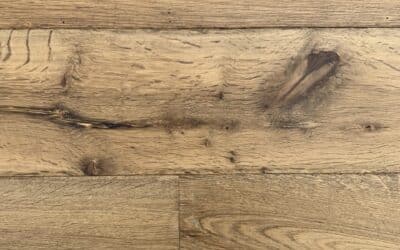Choosing between a floating timber floor installation and a glue-down method is a key decision for any flooring project. Each approach has unique benefits and suitability depending on your needs. Here’s a comparison to help you decide which option is right for you.
What is a Floating Timber Floor Installation?
A floating timber floor rests on an underlay rather than being fixed directly to the subfloor. The planks click together, creating a stable, secure surface that “floats” above the base.
Benefits of Floating Floors:
- Ease of Installation: Ideal for DIY projects, thanks to the click-lock mechanism.
- Cost-Effective: No adhesives or nails are required, reducing materials and labour costs.
- Subfloor Flexibility: Can be installed over various surfaces, including concrete or tiles.
- Movability: Easily removed or replaced, making it perfect for renters or those planning future renovations.
Limitations of Floating Floors:
- Less Soundproof: Without adhesive, sound can transmit through the layers.
- Not Ideal for Wet Areas: Floating floors may not be suitable for high-moisture spaces like bathrooms.
What is Glue-Down Installation?
Glue-down timber floors are fixed directly to the subfloor with a high-quality adhesive. This creates a seamless bond, enhancing the floor’s stability and longevity.
Benefits of Glue-Down Floors:
- Superior Stability: The adhesive bond minimises movement and provides a solid feel underfoot.
- Enhanced Acoustics: The glued surface reduces noise transmission and echoing.
- Durable and Long-Lasting: Ideal for high-traffic areas and commercial spaces.
- Better for Wet Areas: With the right sealant, glue-down floors can handle moisture better than floating options.
Limitations of Glue-Down Floors:
- Complex Installation: Requires professional expertise, especially on uneven subfloors.
- Higher Costs: Adhesives and skilled labour add to the expense.
- Permanent Fix: Removing glue-down floors can be difficult and time-consuming.
Which Installation Method is Right for You?
Choose Floating Floors If:
- You want a quick, cost-effective installation.
- Your subfloor is even and dry.
- You need flexibility for future changes or renovations.
Choose Glue-Down Floors If:
- You require maximum stability and soundproofing.
- The area experiences heavy foot traffic.
- You are installing flooring in wet or commercial spaces.
Both floating timber floor installation and glue-down methods have their place in modern flooring. Your choice depends on your project’s requirements, your budget, and the conditions of your subfloor.
When in doubt, consult a flooring expert to ensure the best outcome for your space. No matter the method, high-quality timber floors add beauty, warmth, and value to your home.


